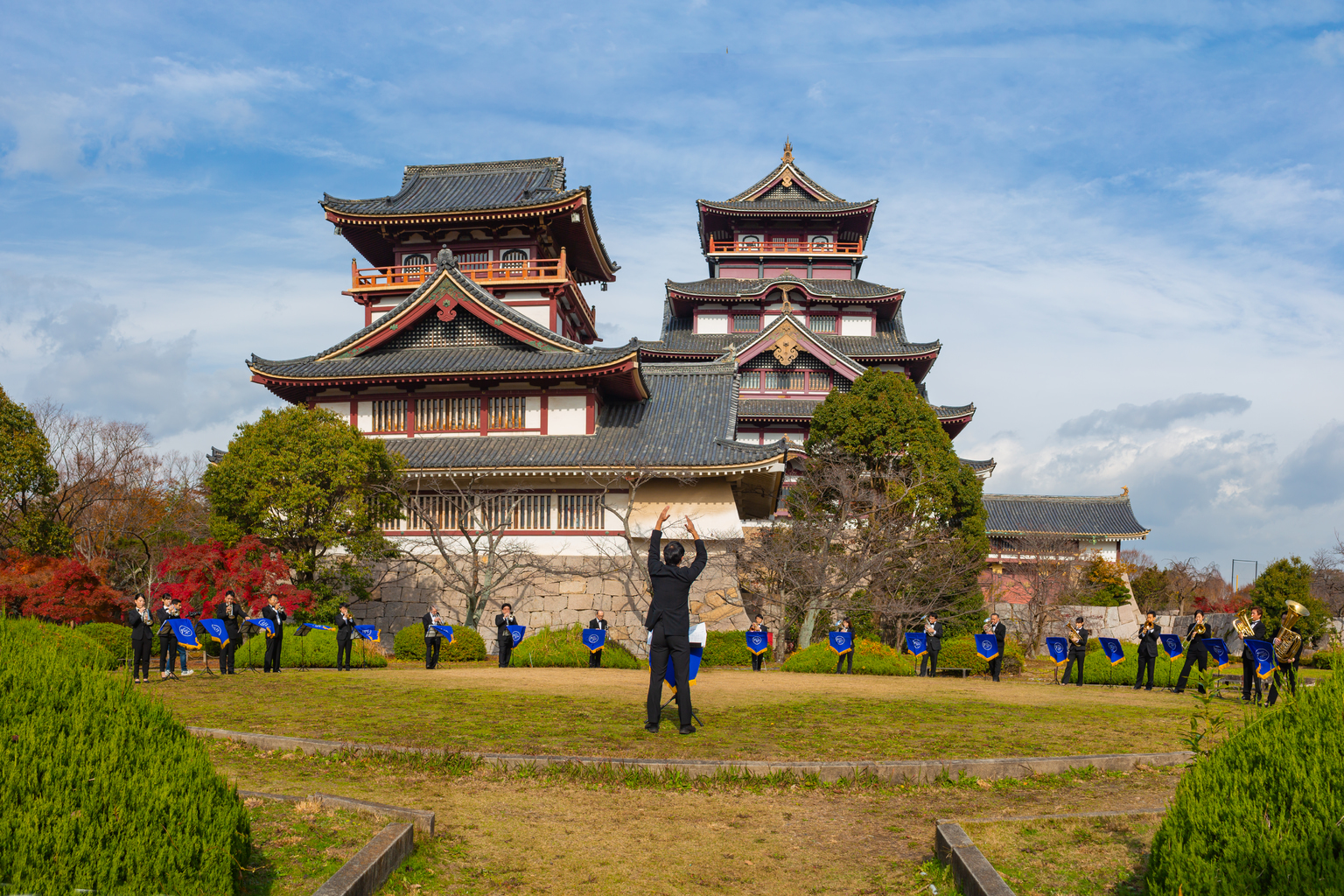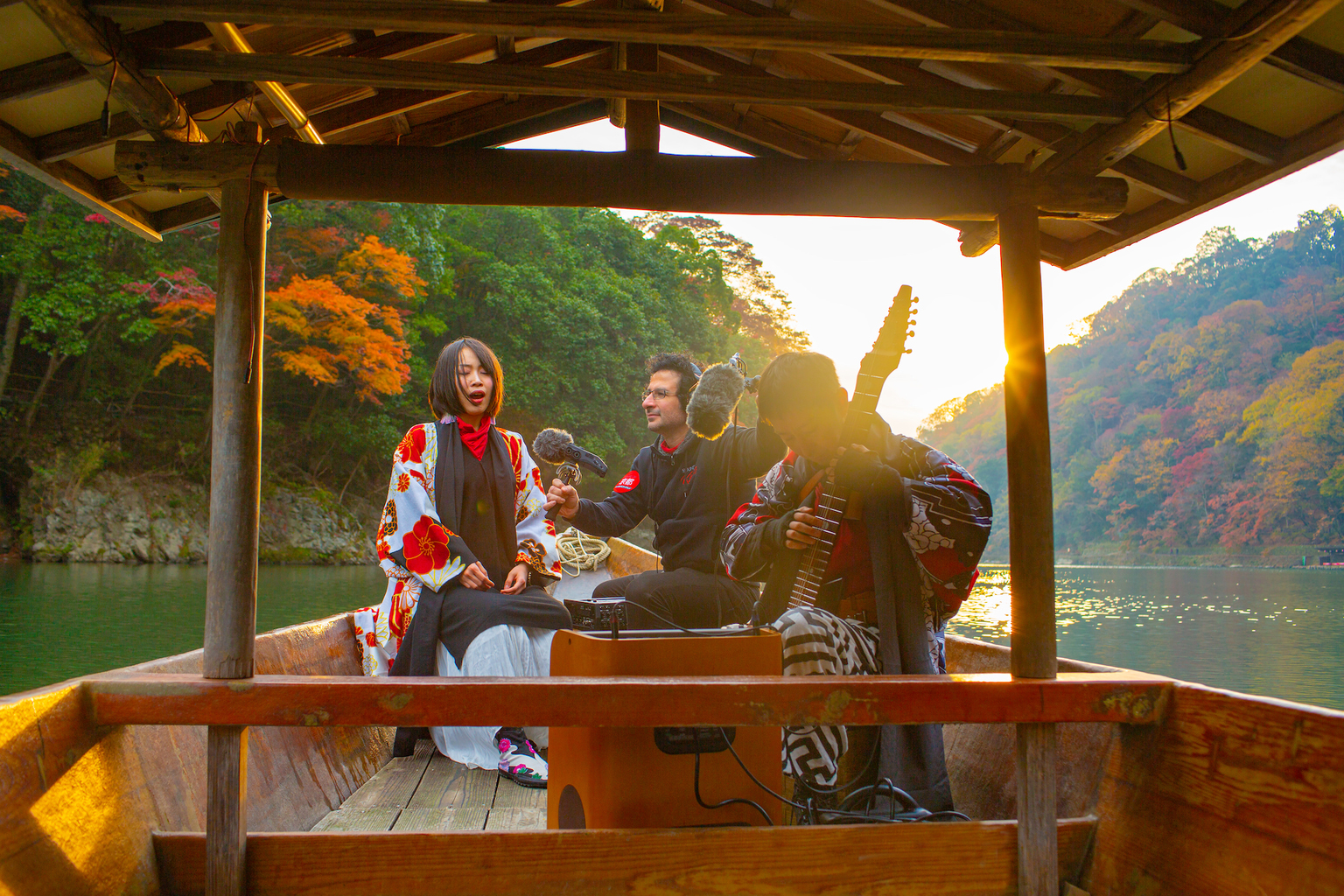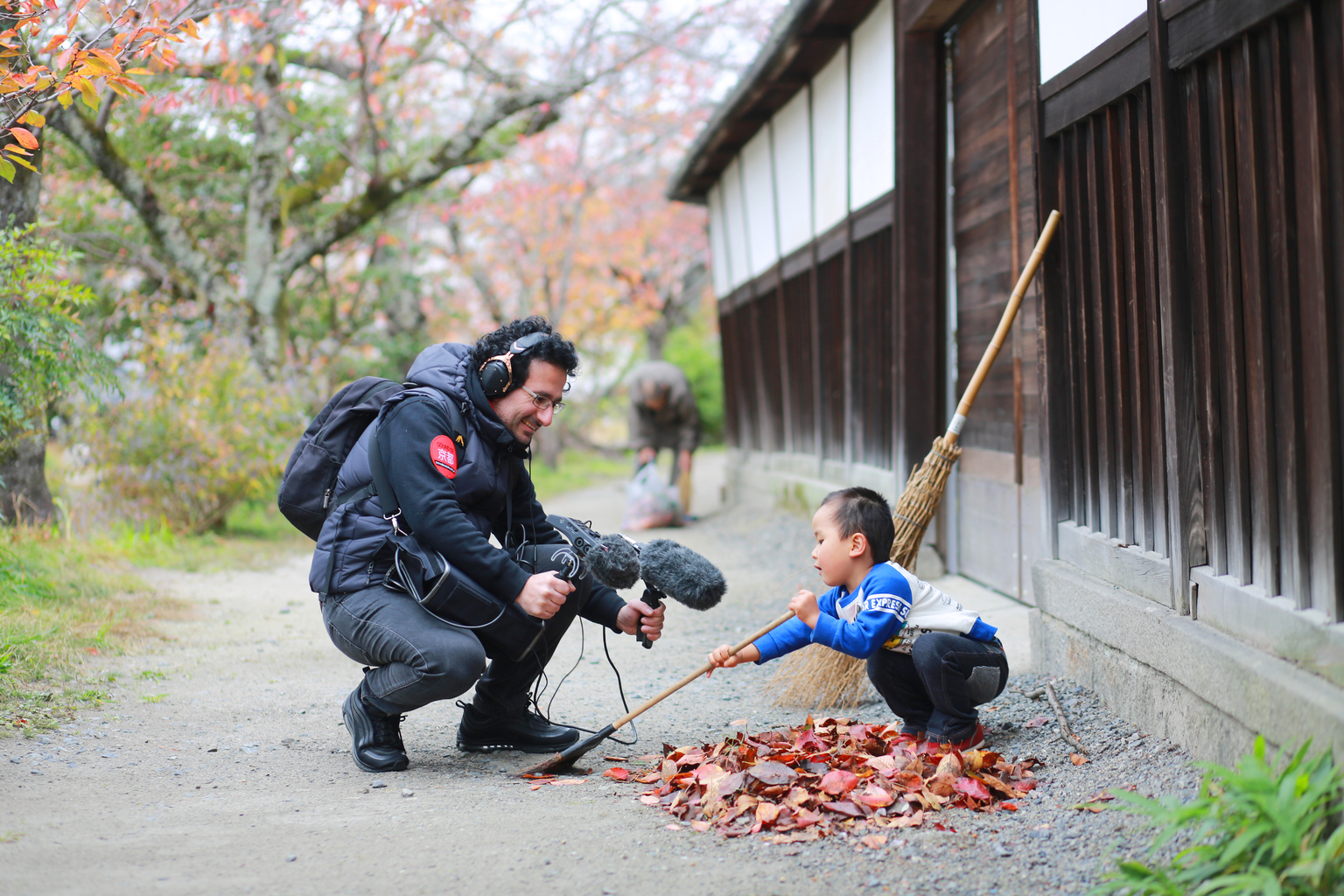Following the success of his critically acclaimed short music film Sound of Vladivostok, Marios Joannou Elia was asked to create something similar for a city that reigned as the capital of Japan for more than 1,000 years. And so, in 2018 began his latest endeavor: Sound of Kyoto.
Over three years, 560 musicians, 18 original compositions, 4,000 video clips, 10,300 documentary photos and 1,650 sounds later, the ambitious project is now in post-production, with screening details coming soon.

“This project was not just a personal goal for me to make another piece of music,” Elia tells TW. “From the outset, the intention was to musicalize the city and mobilize its citizens to take part in an initiative that represents them and the place they live. It’s a contemporary audio-visual portrait of their hometown.”
He describes Kyoto as the stage and its people as the performers.
“We are talking about a unique and historic place that has its own sound,” says Elia. “My job is to then bring everything together. To combine those sounds and acoustic elements of the city with local musicians, orchestras and choirs, etc. This will then be presented as a unified whole via the medium of film.”
Recording the Soundscapes of Japan
Through the video, Elia would like to make people more aware of the essence of sound and its importance to our living environment. The Cyprus-born composer believes that our everyday acoustical experiences have the power to re-energize and aesthetically heal us as long as we are consciously listening to them.
This notion, he feels, is particularly prevalent in Japan, a nation that has an intimate relationship with nature. He points to the “100 Soundscapes of Japan” as an example of this. Chosen by the Ministry of the Environment in 1996, the idea of the list was to promote the country’s most unique sounds and preserve them for future generations while also combating noise pollution.
Included in the top 100 was the bamboo forest of Sagano in the Arashiyama region of Kyoto. It’s a stunning location that features prominently in Elia’s movie.

“The instrument being played in the forest is the shakuhachi which is of course made of bamboo,” says Elia. “That is not just a coincidence. For a project like this you need to contextualize everything. The visual and audio aspects need to interconnect otherwise you have something that is disjointed. To achieve that, the timeline of thematic elements must be just right.”
It is not an easy thing to achieve as there are so many contrasting components. You have very different generations involved, ranging from seniors to a kindergarten choir. There are also varying routines, including ballet and contemporary dance.
“On top of that, you have a distinct sound palette featuring traditional, modern and futuristic elements,” continues Elia. “The idea is to bring all of these things together to create polyphonic musical sequences that represent the whole of Kyoto.”
Contrasting Cities: Kyoto After Vladivostok
Elia began working on the Kyoto project at the beginning of 2018, just a few months after Sound of Vladivostok had been released. While the concept was basically the same, the two cities provided the composer and project’s director with different propositions. They are, after all, worlds apart in terms of culture and history.
Founded in 1860 as a military outpost, Vladivostok’s geographical location made it an important strategic base for Russia’s navy. This was reflected in Elia’s video, which featured warships, cannons, fighter aircrafts and industrial machinery in addition to a Siberian tiger.
Kyoto, meanwhile, is known as the cultural capital of Japan. The seat of the imperial court for centuries, it was spared from large-scale destruction during World War II. Secretary of War Henry Stimson described the place as an “important cultural center,” before removing it from the list of potential atomic bomb targets in 1945. The fact that he had honeymooned there may have influenced his decision.
The city has numerous well-known sites such as Kinkakuji (the Golden Pavilion), the picturesque landscape of Arashiyama, the Geisha district of Gion and the thatched roof houses of Miyama Village, all of which are set to appear in Elia’s short movie.

Spectacular Seasonal Colors on Set
The Cypriot’s first-ever visit to Kyoto was in September 2018. He and his 32-member crew stayed for three months and then returned around the same time the following year. The idea was to catch the autumn foliage, particularly the vibrant red leaves.
“I had seen this view in films and documentaries but to experience it up close was much more beautiful,” says Elia. “It had a much stronger impact than anything a camera can show you.”
However, getting approval to shoot in certain locations in Japan proved cumbersome as there is so much red tape. With a limited timeframe, Elia would often try to think outside the box.
“Generally speaking, officials in Japan aren’t so receptive to improvisation,” says Elia, smiling. “Russia is more of a free spirit. There was one time when we managed to organize a symphony orchestra there in one night. That would have been impossible in Kyoto. You need to work within social codes. That can be tricky for a creative person, but it’s why Japan functions so well. Things did become much easier when we spoke face-to-face rather than remotely.”
Harmony in Paradise
Another thing Elia had to consider was the number of tourists. As it was filmed before the coronavirus pandemic, there were many people around. To truly capture the sounds he wanted, it was essential to shoot and record in a quiet environment.

“Many of our highlights in Kyoto occurred before the crack of dawn,” says Elia. “A personal favorite was when we were on a boat heading towards Arashiyama. As well as the musical performance, you could hear the gentle sound of the oarsman’s stick bobbing along on the emerald water as the sun was rising. That was the perfect harmony.”
Part of that scene is included in the recently released Sound of Kyoto trailer. If the 1:12 video snippet is anything to go by, the final version is certainly something to look forward to. There are still some post-production steps to be done, but it should be ready for screening soon.
As for Elia, he is already planning for his next project. Kyoto will be followed by Moscow as he continues with his ultimate aim of discovering the sounds of the earth.
Learn more about the project via the Sound of Kyoto official website.
Photos by Tatiana Khodova









